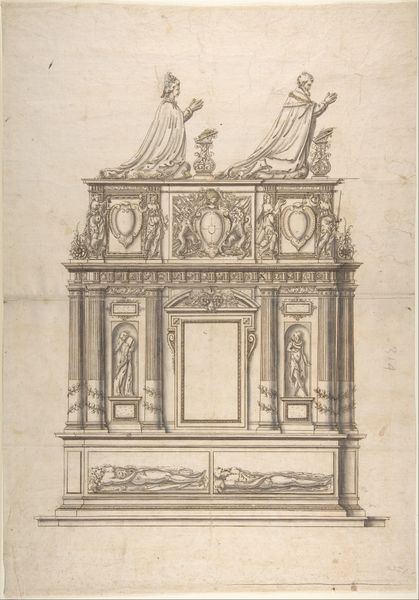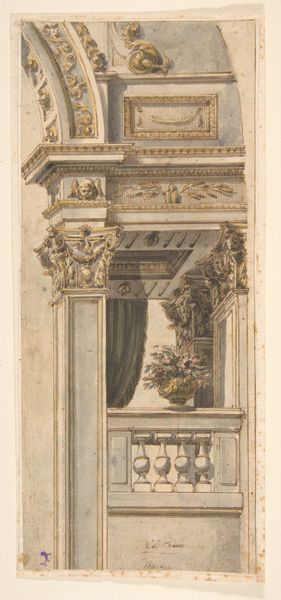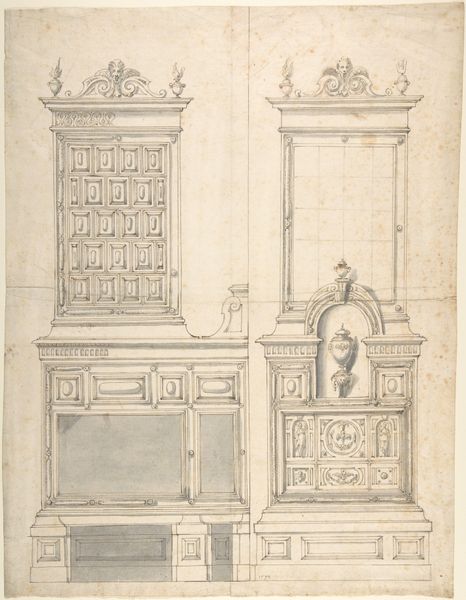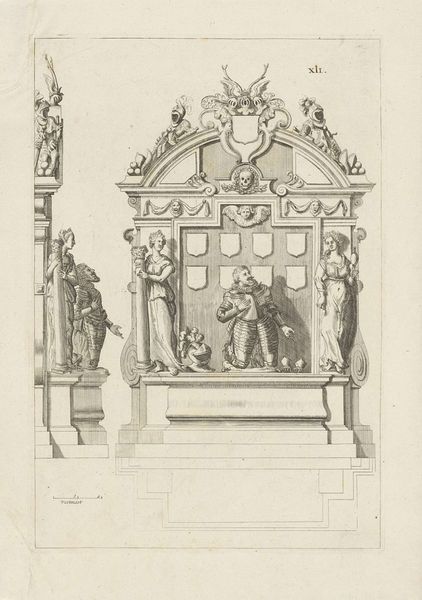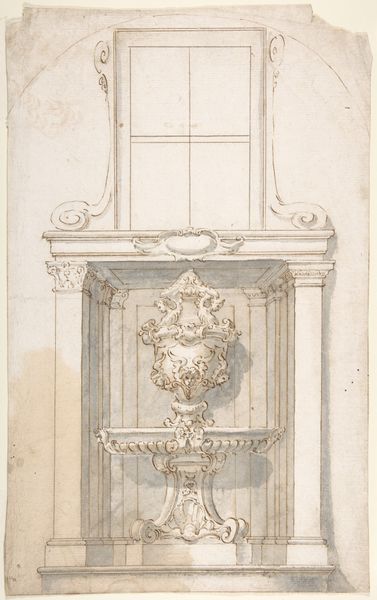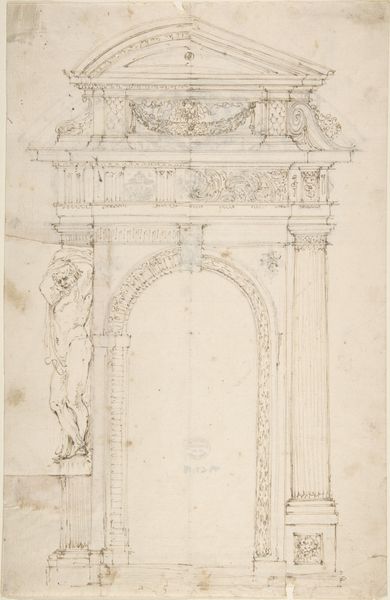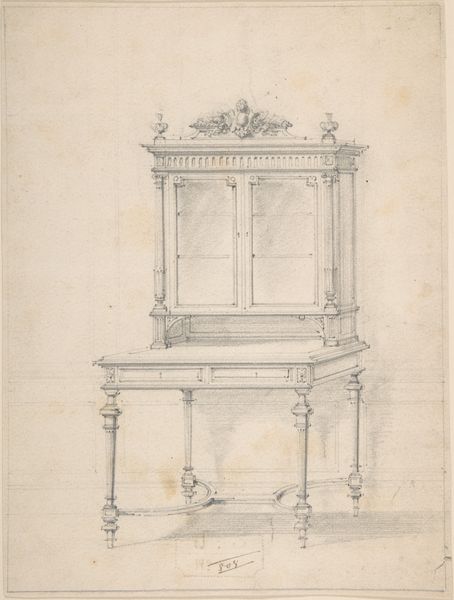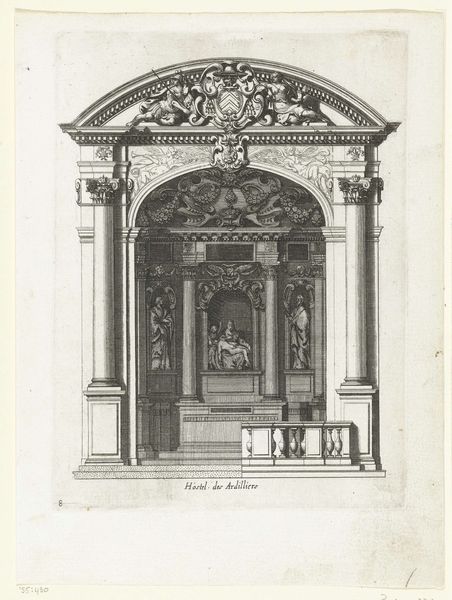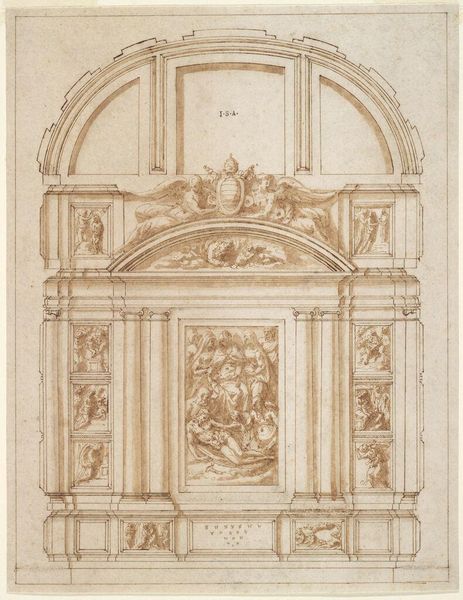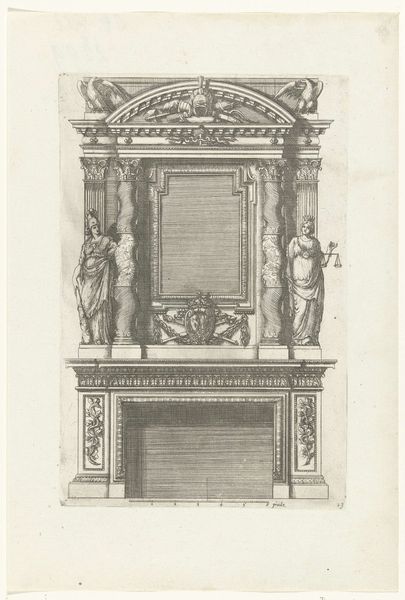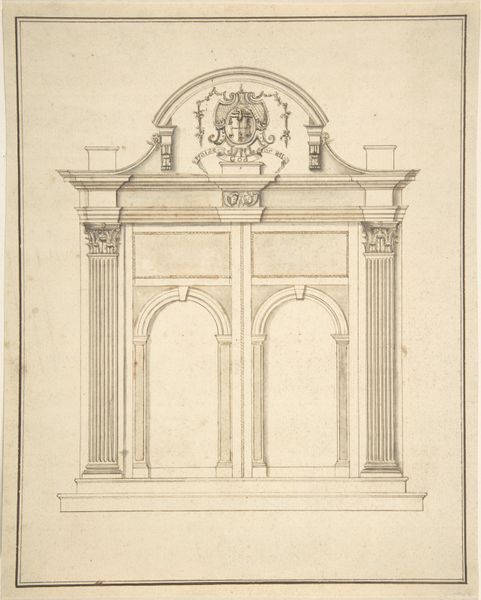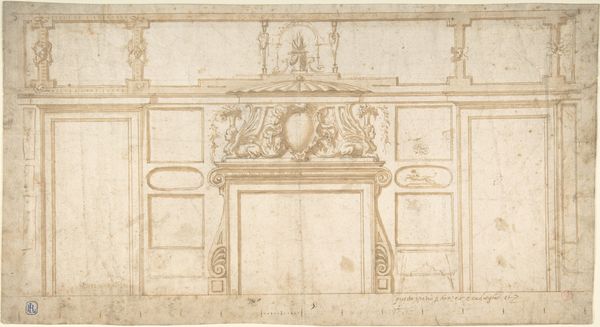
#
aged paper
#
toned paper
#
light pencil work
#
quirky sketch
#
sketch book
#
incomplete sketchy
#
personal sketchbook
#
sketchbook drawing
#
sketchbook art
#
watercolor
Dimensions: height 328 mm, width 200 mm
Copyright: Rijks Museum: Open Domain
Curator: This intriguing work is titled "Ontwerp voor een ingangspoort met twee beelden," or "Design for an Entrance Gate with Two Sculptures," created sometime between 1677 and 1755 by Elias van Nijmegen. It's a sketch on toned paper using primarily pencil and watercolor. Editor: Immediately, I am struck by the quiet grandeur it evokes, even in its sketched form. The symmetrical composition lends a formality, but the delicate lines and faded hues create a feeling of intimacy. It's a design for an entrance, but also feels like peering into a private world. Curator: I find it fascinating to consider this sketch within the broader context of 18th-century European architectural drawings. Often, these weren't merely technical blueprints, but expressions of power, wealth and taste. The gate itself serves as a barrier, reinforcing existing hierarchies, and what is on the other side could be radically diverse. Editor: Absolutely. Thinking about that "other side" is critical. The female figures flanking the gate immediately signal classical allusions, drawing from an established canon. Are they passive decoration, or is Nijmegen using their presence to suggest a specific type of visitor? And it’s crucial to examine not just *who* is allowed through the gate, but who is conspicuously kept *out*. Curator: That’s a key point, the gate could serve as a constant visual reminder of social divisions. Consider too, the gendering of space; were particular entranceways or architectural styles associated with specific genders and their corresponding roles in society? Editor: Exactly! This sketch becomes a potent visual statement about class, gender, and the politics of access. The material also speaks volumes; this feels like a quick sketch intended for more complete development and public dissemination. Curator: This work makes visible the layered histories embedded in built spaces and allows for contemporary inquiries related to design, access, and social equity. Editor: I agree. It prompts us to interrogate not only the intended purpose of these gates but also to recognize and analyze the stories—and whose narratives may be literally locked away.
Comments
No comments
Be the first to comment and join the conversation on the ultimate creative platform.
